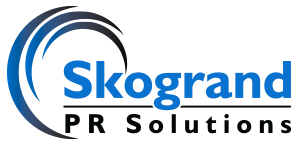At one point in my public relations career, I worked for Thrivent Financial, where a key initiative that I worked on was publicizing the organization’s investment expertise.
Given that it’s important to meet reporters face to face whenever possible, I decided to coordinate a media tour in New York with one of our top mutual fund portfolio managers.
I wasn’t quite sure where to start, though — do I book appointments first or the logistics? How long should each appointment be?
Here’s how I coordinated a successful media tour, step by step.
- Create a target media list. The main reason I chose New York for the media tour was that it’s one of the world’s top financial hubs, and as a result has a high concentration of reporters covering finance. As traffic can be very congested in New York, it’s very helpful to map out exactly where your target media offices are located.
- Decide on dates with your subject matter expert. Two days in New York turned out to be appropriate. In addition to my schedule and the mutual fund portfolio manager’s schedule, I looked to see if there were any big events going on in New York at that time. I wanted to be able to connect with as a many media contacts as possible.
- Start reaching out. Begin with your priority media to determine their availability. Schedule half an hour for your appointments to be conscious of everyone’s time, but block out an hour for each appointment in case meetings go long so you can stay on schedule. (Also, be sure to leave time for traffic jams!)
- Coordinate travel plans. In addition to flights and hotels, you’re going to need a way to easily get around New York. In my case, we booked with BostonCoach. That provided a car waiting for us outside of the building after each appointment.
- Develop briefing materials. Reporters want to have something that they can refer to, take notes on and use in case they decide to do stories. Put the information in a folder that can left behind. Some ideas of information to include are: recent news releases, a fact sheet about your organization and subject matter expert bios.
- Send reminders. As reporters have very hectic schedules, it’s a smart idea to remind them a day before the media tour about the appointment.
- Enjoy the media tour! It was a thrill to go from place to place and tell reporters about the excellent initiatives underway at Thrivent Financial.
While organizing the Thrivent Financial media tour took a lot of time and effort, it was worth it; the reporters whom I met with ended up doing stories on Thrivent Financial’s investment offerings.

